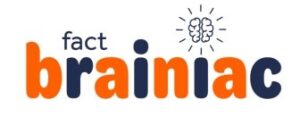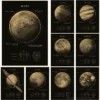This Content Is Only For Subscribers
Longest Conclave in History (1268-1271)
Imagine being locked in a palace for almost three years, surviving on bread and water, with the roof literally torn off above your head. This wasn’t a medieval torture scenario—it was the longest papal conclave in history. For an astonishing 1,006 days (nearly 33 months), from November 29, 1268, to September 1, 1271, the Catholic Church remained without a pope as cardinals deadlocked in the small Italian town of Viterbo. This extraordinary election process would forever change how popes are chosen and establish the conclave traditions we still see today.
Why Viterbo? Setting the Stage
The saga began on November 23, 1268, when Pope Clement IV died in Viterbo, a city about 50 miles north of Rome in the Papal States. The papacy was at a critical juncture. Political tensions ran high between the pro-French Angevin faction (Guelphs) and the pro-Imperial Italian faction (Ghibellines).
Just six days after Clement’s death, on November 29, the College of Cardinals gathered in the Episcopal Palace of Viterbo (Palazzo dei Papi) to elect a successor. Twenty cardinals were eligible to vote, though only 19 were present when the process began. Nobody could have predicted the unprecedented deadlock that would follow.

The 1,006-Day Deadlock: Key Dates & Drama
What started as a standard election quickly descended into a factional stalemate. The College of Cardinals split along political lines:
- The French faction supported candidates loyal to Charles of Anjou, the French king’s brother who ruled southern Italy
- The Italian faction favored candidates with imperial sympathies
- Two powerful Roman families (Orsini and Annibaldi) each backed their own candidates
By early 1269, daily voting had stalled completely. No candidate could secure the necessary two-thirds majority. Historical records show at least 137 separate ballots were cast during the conclave, all ending in deadlock.
As months passed without a decision, three cardinals died during the process. Another resigned in frustration. The Church and much of Europe remained effectively leaderless, with no spiritual authority to crown kings, settle disputes, or guide the faithful.
Bread, Water and No Roof: Civic Pressure Tactics
The citizens of Viterbo grew increasingly impatient. The lack of a pope meant economic hardship for the town, which relied on papal business. Local magistrates decided to take drastic action to force a decision.
First, they literally locked the cardinals inside the palace, creating the first true “con clave” (“with a key”). When this failed to produce results, officials escalated their tactics:
- By late 1269, they restricted the cardinals’ movements and communications with the outside world
- On June 8, 1270, after roughly a year of deliberations, they cut the cardinals’ diet to bread and water only
- In a shocking move, they removed the palace roof, exposing the princes of the Church to the elements
A contemporary account described the desperate situation: “The rain and wind swept in upon them. The food passed to them was reduced to bread and water. Still no pope was elected.”

Even with these extreme measures, the deadlock persisted. Between March and August 1271, both King Philip III of France and Charles of Anjou personally visited Viterbo to pressure the cardinals, but their intervention failed to break the impasse.
From Teobaldo Visconti to Gregory X: A Surprise Pope
After almost three years of stalemate, the cardinals finally reached a compromise. They appointed a six-member committee to select a pope, agreeing to abide by its unanimous decision.
On September 1, 1271, this committee chose someone who wasn’t even present—or even a cardinal. Their selection was Teobaldo Visconti, a church diplomat serving as a crusader-legate in Acre (modern-day Israel). Visconti was thousands of miles away when elected.
This extraordinary choice highlighted the cardinals’ desperation to end the deadlock. Messengers traveled to Acre to inform Visconti of his selection. He accepted, chose the name Gregory X, and finally reached Italy in February 1272. After being ordained as a priest (he wasn’t one yet!), he was crowned pope in March 1272.

Ubi periculum: How 1274 Changed Future Conclaves
Pope Gregory X wasted no time in ensuring no future election would drag on like his own. On July 7, 1274, at the Second Council of Lyon, he issued the papal bull Ubi periculum (“Where danger”), which established strict rules for future conclaves:
- Cardinals would be sequestered in a closed area with no private rooms
- After three days, their food would be limited to one dish per meal
- After five days, they would receive only bread, water, and wine
- During the conclave, cardinals would receive no income
- No communication with the outside world would be permitted
These rules, with some modifications, still govern papal elections today. The smoke signals (black for no decision, white for a new pope), the sealed doors, and the sparse accommodations all trace their origins to Gregory’s reforms born from the Viterbo experience.

Lasting Lessons & Modern Parallels
The three-year Viterbo conclave demonstrates how deeply political tensions can paralyze even spiritual institutions. The Church learned valuable lessons from this crisis:
- Decision-forcing mechanisms are necessary when powerful interests clash
- Physical discomfort can motivate compromise when principles alone cannot
- Sometimes an outsider candidate provides the only acceptable solution
Modern conclaves rarely last more than a few days. The longest conclave of the 20th century (1922) took only five days and fourteen ballots to elect Pope Pius XI. The election of Benedict XVI in 2005 required just two days, while Francis was elected in 2013 after only five ballots.
The extraordinary measures taken at Viterbo might seem extreme today, but they established a framework that has served the Church for nearly 750 years, ensuring leadership transitions remain swift and decisive.
Frequently Asked Questions About the Longest Conclave
How long did the longest papal conclave last?
The longest conclave lasted 1,006 days (2 years and 9 months), from November 29, 1268, to September 1, 1271.
Why did the 1268 conclave take 3 years?
Political divisions between pro-French and pro-Imperial factions, plus rivalry between powerful Roman families, created an unbreakable deadlock where no candidate could reach the required two-thirds majority.
Did they really remove the roof during the Viterbo conclave?
Yes, in mid-1270, Viterbo officials literally removed the palace roof to expose the cardinals to the elements and force a decision.
Who was elected after the longest conclave?
Teobaldo Visconti, a non-cardinal serving as a crusader-legate in the Holy Land, was elected and took the name Pope Gregory X.
What rules came from this experience?
Pope Gregory X issued Ubi periculum in 1274, establishing the modern conclave system with sequestration, reduced rations, and strict isolation to ensure quick decisions.
As cardinals prepare to enter conclave following Pope Francis‘ death in April 2025, they follow procedures directly shaped by the Viterbo experience. The cardinals enter a locked room, face restricted diets if deliberations extend, and signal their progress with the same smoke signals established over seven centuries ago—all because of the longest conclave in history.



